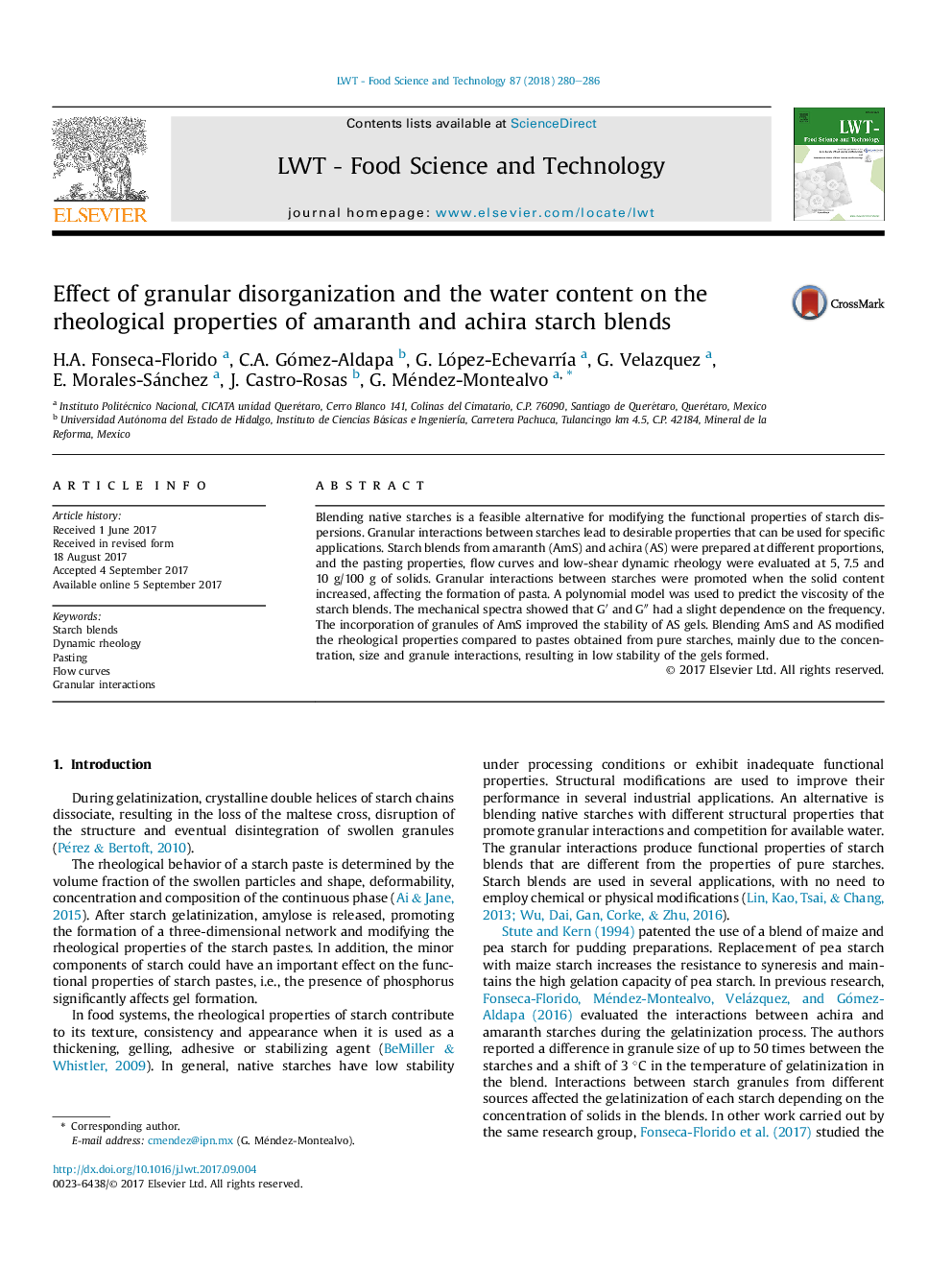| Article ID | Journal | Published Year | Pages | File Type |
|---|---|---|---|---|
| 5768617 | LWT - Food Science and Technology | 2018 | 7 Pages |
â¢Starch blends viscosity presented a non-additive behavior.â¢Paste viscosity depends on the volume fraction occupied by swollen granules.â¢Amaranth starch promotes a more stable gel structure, favoring the gel packing.â¢Amaranth starch restricted the leached out of amylose from achira starch.â¢Amaranth starch restricted granular interaction in starch blends reducing viscosity.
Blending native starches is a feasible alternative for modifying the functional properties of starch dispersions. Granular interactions between starches lead to desirable properties that can be used for specific applications. Starch blends from amaranth (AmS) and achira (AS) were prepared at different proportions, and the pasting properties, flow curves and low-shear dynamic rheology were evaluated at 5, 7.5 and 10Â g/100Â g of solids. Granular interactions between starches were promoted when the solid content increased, affecting the formation of pasta. A polynomial model was used to predict the viscosity of the starch blends. The mechanical spectra showed that Gâ² and Gâ³ had a slight dependence on the frequency. The incorporation of granules of AmS improved the stability of AS gels. Blending AmS and AS modified the rheological properties compared to pastes obtained from pure starches, mainly due to the concentration, size and granule interactions, resulting in low stability of the gels formed.
